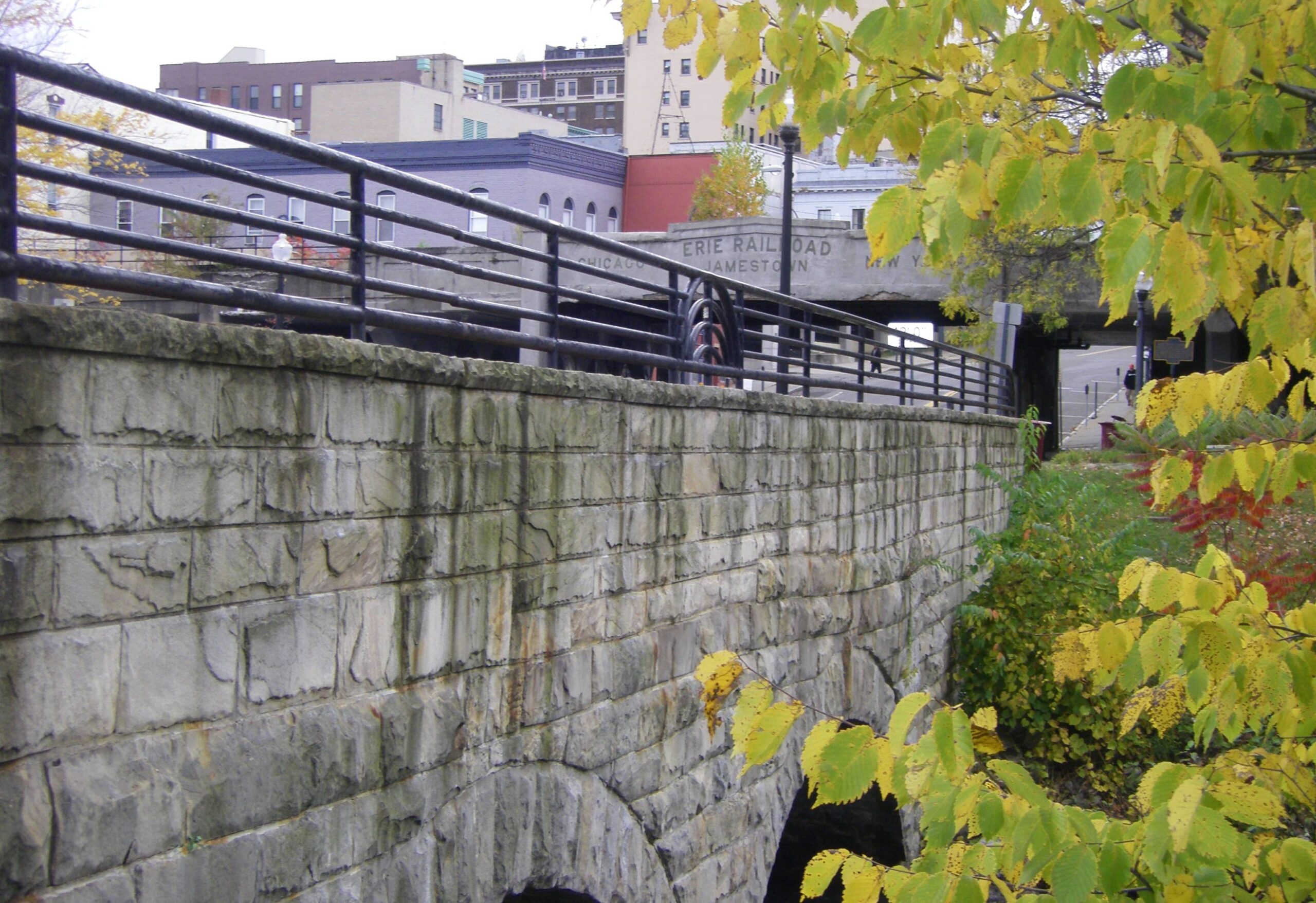A transportation experiment has been unfolding for the past few months on South Main Street in Jamestown – and you’ve probably been a participant.
It’s an unintentional experiment in traffic calming that stems from a maintenance issue at the bridge that connects downtown with Brooklyn Square. Some stones on this historic double arch bridge – parts of which date back to the 19th century – have fallen into the Chadakoin River, forcing engineers to close the bridge’s western sidewalk and narrow its roadway in both directions.
Motorists have responded to the situation in a very instructive way. They’ve been slowing down. And by slowing down and exercising due caution, Jamestown’s motorists have turned that area into a safer place to travel by vehicle and foot – without causing any notable problems or gridlock.
These behaviors demonstrate something that is now well-known to traffic engineers and urban planners: making our streets safer for all users usually doesn’t require elaborate traffic control devices or extensive driver education campaigns. Often, all you need to do is design streets in ways that encourage closer attention and slower speeds.
Jamestown’s drivers have recognized this for years through stark contrasts in local street design. When you drive on Third Street in downtown Jamestown, the street keeps you from going much more than 20 m.p.h. There are no flashing lights and no speed bumps. But the narrow roadway and context of the street create an environment where drivers feel most comfortable going slower than the speed limit.
As soon as you hit the Third Street Bridge, though – or Washington Street, or Foote Avenue, or parts of Main Street – the design of the street makes 30 m.p.h. feel too slow. So, drivers respond by going fast and creating spaces where pedestrians feel like an afterthought.
This has been the situation near the South Main Street bridge for years. Cars come gliding downhill, go under the viaduct, and enter Brooklyn Square at speeds generally greater than the legal limit. This situation has prevented a crosswalk from being installed at the bridge, despite the presence of the increasingly popular Riverwalk, because officials would prefer to see Riverwalk users cross at the intersection of Main and Harrison.
This rarely happens, of course. Most people who cross Main Street while using the Riverwalk – this author included – jaywalk at the bridge when the coast looks clear and have to cross a wide street that opens up to a wide and busy intersection.
This is why the current configuration of traffic at the bridge and the responsiveness of motorists to the narrower street present a significant opportunity. As the county, which owns the bridge, grapples with finding a solution and the funding to resolve the bridge’s structural problems, it should consider permanently changing how the bridge works.
By bumping out the curbs and keeping the travel lanes narrow, several things will be accomplished. Wider sidewalks will create more space on the bridge to walk and view the river, thus enhancing the Riverwalk experience. Wider sidewalks and narrower travel lanes will also considerably shorten the crossing distance for pedestrians, making the area much safer for all Riverwalk users. And by slowing the speeds of vehicles entering Brooklyn Square, the area will become a safer place for motorists.
These wide ranging benefits are a perfect demonstration of the “Complete Streets” movement that the City of Jamestown embraced in 2012 when City Council passed an ordinance calling for all future street design and construction work to seek to accommodate everyone who uses city streets. It’s part of a huge change in traffic engineering around the U.S., as communities adjust to the 20th century engineering mindset that made the speed and efficiency of motor vehicle travel the top priority – often to the detriment of safety and community character.
Correctly dealing with the South Main Street bridge could be a very visible part of Chautauqua County’s and Jamestown’s commitment to creating more walkable and lively places for residents and visitors. And it would be perfectly in line with recommendations from the city’s Active Transportation Plan, a plan initiated by the Chautauqua County Health Network’s Creating Healthy Places program that calls for fine-tuning infrastructure across the city to better accommodate all modes of travel.
The experiment on South Main Street – however unintended – is working. Now it’s time to take what we’ve learned from it and make a permanent and needed change.
–Peter Lombardi
This post originally appeared in The Post-Journal on October 13, 2014, as the JRC’s biweekly Renaissance Reflections feature.

